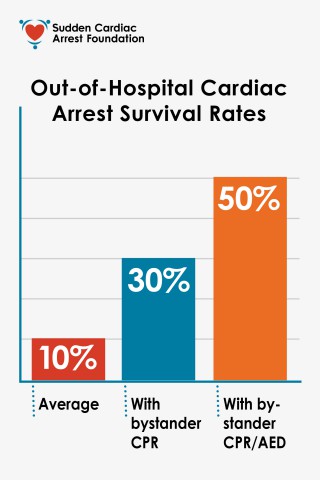
Did you know October is National Sudden Cardiac Arrest Awareness Month? Sudden cardiac arrest (SCA) is a public health crisis. It strikes 1,000 people each day in the U.S. alone. Thousands of lives could be saved each year if more people understood the critical importance of bystander intervention with CPR and the use of automated external defibrillators (AEDs). Survival from SCA depends on the quick actions of people nearby who call 911, start CPR and use an AED to restart the heart.
This October, we encourage you and everyone you know to learn how to save lives with a few simple steps:
- Recognize sudden cardiac arrest. If a person is unresponsive and not breathing normally, assume it is SCA.
- Call 911 and follow dispatcher instructions.
- Start CPR. Push hard and fast on the center of the chest at a rate of 100-120 beats per minute (e.g., to the tune of “Baby Shark” or “Staying Alive”).
- Use the nearest AED as quickly as possible to restart the heart.
Some background on SCA:
Sudden cardiac arrest is a life-threatening emergency that occurs when the heart suddenly stops beating. Usually, there is no warning. It strikes people of all ages who may seem to be healthy, even children and teens. When SCA happens, the person collapses and doesn’t respond or breathe normally. They may gasp or shake as if having a seizure. SCA leads to death in minutes if the person does not get help right away. Survival depends on people nearby calling 911, starting CPR, and using an AED as soon as possible.
Today, only 1 in 10 victims survives. But when bystanders give CPR and use an AED at the scene, as many as 5 in 10 victims survive. And, since sudden cardiac arrest most often occurs at home, laypersons will most likely be called upon to help save the life of a loved one.
